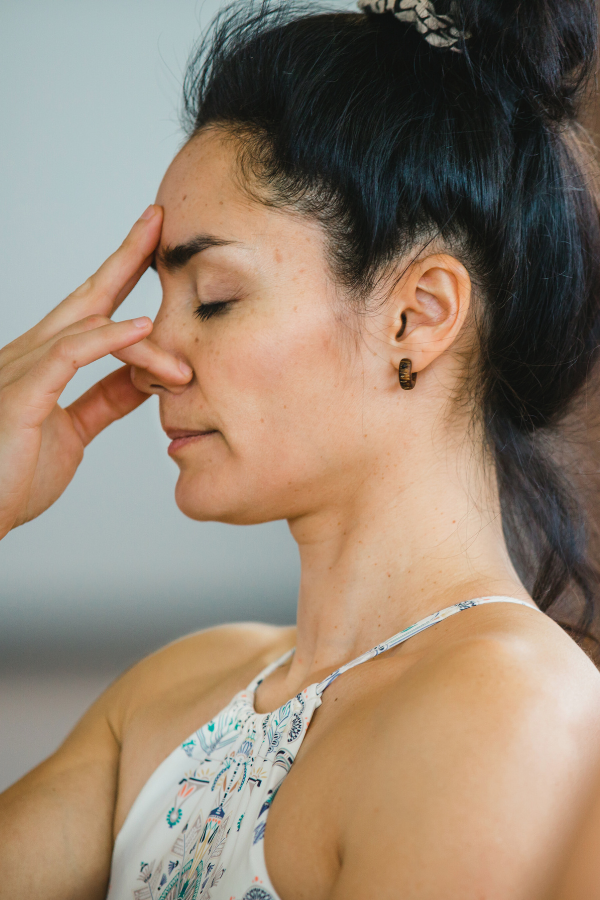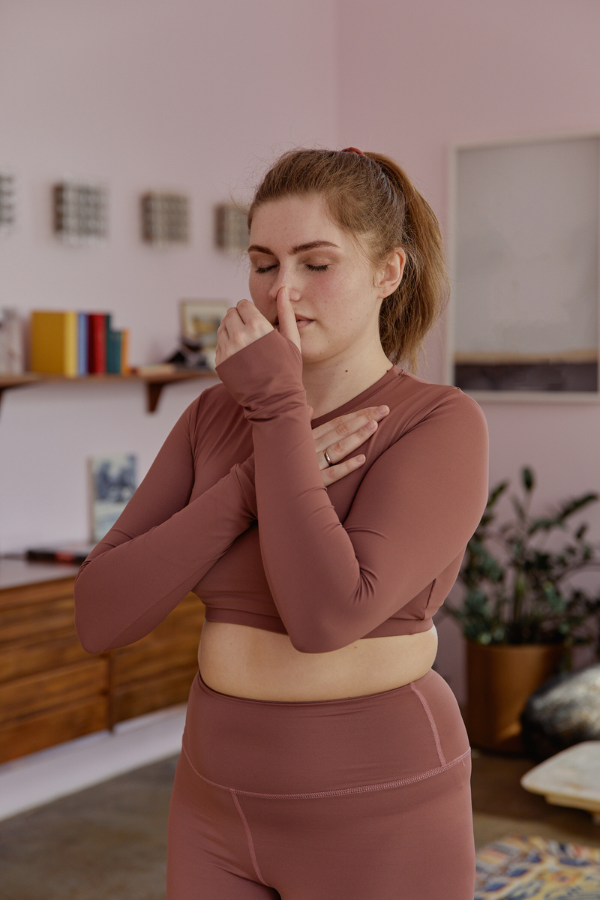

Do Breathing Exercises for Anxiety Actually Work (If, So How)?
Summary
Breathing exercises are a powerful tool for managing anxiety and offer additional benefits like improved mental and physical health. By practicing techniques such as deep breathing, box breathing, and 4-7-8 breathing, you can calm your mind, lower blood pressure, and enhance focus. These exercises are simple to incorporate into your daily routine and can make a significant difference in your overall well-being.
Reflection Questions
- How often do you experience anxiety, and what strategies have you used to manage it in the past?
- Have you ever tried breathing exercises? If so, how did they impact your mental and physical state?
- What times during your day could you set aside to practice breathing exercises for a few minutes?
Journal Prompt
Reflect on a recent moment when you felt overwhelmed or anxious. Describe how you felt and what triggered that feeling. Now, imagine you took a few minutes to do a breathing exercise during that moment. How do you think it might have changed your experience? Write about how you can integrate these exercises into your daily routine to manage stress better.
Anxiety is something many of us are all too familiar with—whether it’s juggling work deadlines, keeping up with family responsibilities, or just dealing with the daily hustle and bustle, it can feel like there’s always something to worry about. In fact, nearly one in five adults in the U.S. experience anxiety each year. Over the past twenty years, studies have consistently shown that women experience anxiety at higher rates than men do. According to this NIH study, which examines data from 2001 to 2004, the “prevalence of any anxiety disorder was higher for females (23.4%) than for males (14.3%)” during that period. More recent studies have found that “women are almost twice as likely to suffer from anxiety as men.”
With stats like that, it’s no wonder that women are always searching for ways to manage their anxiety. You might have heard about how taking a few deep breaths can help calm your nerves, but do these exercises really work? In this article, we’ll examine the science behind deep breathing exercises and see if they truly live up to the hype. So, take a deep breath (inhale slowly, exhale slowly) and read on!
Anxiety vs Anxiety Disorders: How to Tell the Difference


The difference between anxiety and an anxiety disorder lies in the intensity, duration, and impact of the anxious feelings. Anxiety is a natural and often short-term response to stress or danger. Everyone experiences it from time to time—like feeling nervous before a big presentation, worrying about a loved one, or getting butterflies before an important event. This type of anxiety is usually manageable, temporary, and doesn’t significantly interfere with your daily life.
An anxiety disorder, on the other hand, is a more persistent and severe condition. It usually involves excessive fear that lasts for weeks, months, or even longer. This resource from the Mayo Clinic notes that “Excessive, ongoing anxiety and worry that are difficult to control and interfere with day-to-day activities may be a sign of generalized anxiety disorder.”
Unlike regular anxiety, an anxiety disorder can significantly disrupt your life, affecting your ability to work, socialize, or even perform everyday tasks. People with anxiety disorders might experience frequent panic attacks, avoid certain situations out of fear, or feel constantly on edge without a clear reason. It often requires professional treatment, such as therapy or medication, to manage effectively.
When to See A Doctor for Your Anxiety
If you’re feeling anxious more often than not, or if your anxiety is starting to interfere with your daily life, it might be time to see a doctor. Occasional anxiety is a normal part of life, but if you find that your worries are becoming overwhelming or persistent, it’s essential to take action.
Signs that it’s time to consult a professional include trouble sleeping, constant feelings of dread or worry that you can’t shake difficulty concentrating, or physical symptoms like headaches, stomach issues, or muscle tension that don’t seem to go away. If these symptoms affect your ability to work, maintain relationships, or enjoy life, reaching out to a doctor is wise.
It’s also essential to see a doctor if you’re experiencing panic attacks—sudden, intense episodes of fear that come with physical symptoms like chest pain, shortness of breath, dizziness, or a racing heart. These can be really frightening, and a doctor can help you understand what’s happening and how to manage them.
If you find yourself avoiding certain situations or places out of fear or if your anxiety is making it hard to do things you used to enjoy, professional support can make a big difference. Remember, you don’t have to struggle with anxiety alone; a doctor or mental health professional can work with you to find effective ways to manage and reduce your symptoms, helping you feel more in control and able to live your life to the fullest.
How Breathing Affects the Body and Mind


Breathing might seem like something we just do without thinking, but it actually has a big impact on how our body feels and responds to stress. When we take slow, deep breaths, it sends a signal to our brain that everything is okay, helping to calm us down.
This is because breathing influences our nervous system, particularly the part that controls how we react to stress. So, something as simple as taking a few deep breaths can actually help our body switch gears from being stressed out to feeling more relaxed.
The Role of the Autonomic Nervous System
Our autonomic nervous system is like the body’s autopilot, managing all the things we don’t have to think about, like our heart rate, digestion, and breathing. It has two main parts: the sympathetic nervous system, which is responsible for the “fight or flight” response, and the parasympathetic nervous system, which is all about “rest and digest.”
The sympathetic system kicks in when we’re stressed or in danger, speeding everything up so we’re ready to react. On the flip side, the parasympathetic system helps slow things down and brings us back to a state of calm.
How Breathing Can Shift the Nervous System
When we’re feeling stressed or anxious, our body is usually in that “fight or flight” mode, thanks to the sympathetic nervous system. This might make our heart race, our muscles tense, and our breathing quicken.
But by focusing on slow, diaphragmatic breathing, we can actually activate the parasympathetic nervous system, which helps shift our body into “rest and digest” mode. This switch tells our body that we’re safe and can relax, helping to reduce those anxious feelings and bring us back to a more peaceful state.
Let’s take a look at four popular breathing techniques that help shift the nervous system.
Popular Anxiety Breathing Exercises and How to Execute Them
Deep Breathing (Diaphragmatic or Belly Breathing)


Deep breathing, or diaphragmatic breathing, has ancient roots across various cultures and practices. While it’s commonly associated with yoga, where it’s known as “belly breathing” or “abdominal breathing,” the technique is also found in traditional Chinese medicine, meditation practices, and even in Western relaxation techniques.
In yoga, deep breathing is integral to pranayama, the practice of controlling the breath. The technique is used to calm the nervous system, improve focus, and connect the mind and body. In traditional Chinese practices like Qigong, deep breathing is also central to cultivating and balancing energy (Qi) in the body.
How to Perform this Breathing Exercise
Deep breathing, also known as diaphragmatic breathing, is super simple and can be done just about anywhere. Start by sitting or lying down in a comfortable position. Place one hand on your chest and the other on your belly.
Take a slow, deep breath in through your nose, allowing your belly to rise as you fill your lungs with air. Your chest should stay mostly still. Then, exhale slowly through your mouth, letting your belly fall. Repeat this for a few minutes, focusing on making each breath as deep and slow as possible.
What Are the Benefits?
Deep breathing helps to slow down your heart rate and reduce cortisol levels, which is the hormone associated with stress. By calming your body this way, it helps to lower anxiety and promotes a sense of relaxation. It’s a quick and easy way to hit the reset button whenever you’re feeling overwhelmed.
Box Breathing (Square Breathing)


Box breathing, or square breathing, is a relatively modern technique that has gained popularity in mindfulness practices, meditation, and stress management. While it doesn’t have direct origins in ancient practices like yoga or Qigong, it has been widely adopted by various fields, including the military and high-performance coaching, for its effectiveness in managing stress and improving concentration.
The technique was popularized by Navy SEALs as a way to stay calm and focused under pressure. Its simplicity and effectiveness have made it a staple in many modern stress relief practices.
How to Perform this Breathing Exercise
Box breathing, or square breathing, is another simple technique that’s great for calming your mind. Imagine drawing a square with your breath. Start by inhaling slowly through your nose for a count of four. Hold your breath for another count of four. Then, exhale slowly through your mouth for four seconds. Finally, hold your breath again for a count of four before starting the cycle over. Repeat this pattern for a few minutes, maintaining a steady rhythm.
What Are the Benefits?
Box breathing is fantastic for improving focus and reducing stress. By concentrating on your breath and following the rhythm, it helps to clear your mind and bring you back to the present moment. This technique is particularly helpful during stressful situations when you need to quickly regain your composure.
4-7-8 Breathing
The 4-7-8 breathing technique was popularized by Dr. Andrew Weil, an American doctor who has blended traditional healing practices with modern medicine. Although Dr. Weil introduced the technique to a broad audience, the method is rooted in the ancient yogic practice of pranayama.
Pranayama involves various breath control techniques used to regulate energy, calm the mind, and enhance overall well-being. The 4-7-8 breathing pattern is similar to other pranayama techniques that emphasize breath retention and extended exhalation, which are designed to activate the parasympathetic nervous system and induce relaxation.
Fuel your creative fire & be a part of a supportive community that values how you love to live.
subscribe to our newsletter
*please check your Spam folder for the latest DesignDash Magazine issue immediately after subscription


How to Perform this Breathing Exercise
The 4-7-8 breathing technique is great for calming your mind, especially before bed. To start, sit or lie down comfortably. Inhale quietly through your nose for a count of four. Hold your breath for a count of seven. Then, exhale completely through your mouth, making a whooshing sound, for a count of eight. This counts as one breath. Repeat the process three more times, or until you feel more relaxed.
What Are the Benefits?
This anxiety breathing technique is a “natural tranquilizer” for the nervous system. It’s known for calming the mind, reducing stress, and even improving sleep quality. The extended exhalation helps to release more carbon dioxide from your body, which slows down your heart rate and promotes a feeling of relaxation, making it easier to fall asleep.
Alternate Nostril Breathing (Nadi Shodhana)


Alternate Nostril Breathing, or Nadi Shodhana, is a traditional yogic pranayama practice with deep roots in ancient Indian texts, such as the Hatha Yoga Pradipika and the Yoga Sutras of Patanjali. “Nadi” refers to the energy channels in the body, and “Shodhana” means purification.
This yogic breathing technique is believed to balance the flow of energy between the left and right sides of the body, harmonizing the mind and body and promoting overall well-being. It’s a core practice in yoga, used to calm the mind, reduce stress, and prepare for meditation by clearing mental and physical blockages.
How to Perform this Breathing Exercise
Alternate nostril breathing is a bit more involved but very effective. Start by sitting in a comfortable position with your spine straight. Using your right thumb, close your right nostril and inhale a relaxing breath deeply through your left nostril.
Then, close your left nostril with your right ring finger, release your right nostril, and exhale through the right nostril. Inhale again through the right nostril, then close it with your thumb, release the left nostril, and exhale through the left nostril. This completes one cycle. Continue for several cycles, focusing on your breath.
What are the Benefits?
This technique helps to balance the nervous system and reduce stress by promoting harmony between the left and right sides of the brain. It’s especially useful for bringing a sense of calm and balance to both the body and mind, making it a great practice to incorporate into your daily routine or when you’re feeling particularly stressed.
What Does the Science Say About Breathwork and Anxiety?


Experts widely agree that breathing exercises can help reduce anxiety by activating the parasympathetic nervous system, which promotes a state of calm and relaxation. Research shows that slow, deep breathing techniques, such as diaphragmatic breathing or 4-7-8 breathing, help lower cortisol levels (the stress hormone), decrease heart rate, and improve emotional regulation.
By focusing on the breath, people can shift their attention away from stressors and interrupt the cycle of anxious thoughts. Consistent practice of these exercises is often recommended as part of a comprehensive approach to managing anxiety.
However, many studies (like this one) acknowledge that “further work is needed to establish the benefits of deep breathing.” Below are a few recent studies and their conclusions.
This 2021 Study on Relaxation Training Found…
This study published in Evidence-Based Complementary and Alternative Medicine in 2021 evaluated the effectiveness of three relaxation techniques—progressive muscle relaxation (PMR), deep breathing, and guided imagery—on psychological and physiological states of relaxation in 60 healthy undergraduates.
All three techniques significantly improved relaxation compared to a control group, with PMR and guided imagery showing more robust physiological benefits. The study supports the use of these techniques for stress reduction and suggests that they could be particularly effective when targeting both psychological and physiological relaxation.
This 2022 Study on GAD Found…
A study published in the Journal of Physical Therapy Science examined the effects of breathing exercises on individuals with generalized anxiety disorder (GAD). The randomized double-blind trial found that participants who engaged in breathing exercises, alongside traditional therapy, showed significant improvements in respiratory indices and a reduction in anxiety levels. The study suggests that incorporating breathwork into GAD treatment may enhance therapeutic outcomes, particularly when practiced consistently over an extended period.
This 2023 Meta-Analysis Found…
A 2023 meta-analysis published in Scientific Reports examined the efficacy of breathwork on reducing stress and improving mental health across 12 randomized-controlled trials involving 785 participants. The study found that breathwork interventions were significantly associated with lower self-reported stress, anxiety, and depressive symptoms compared to non-breathwork controls. The effect sizes were small to moderate, suggesting potential therapeutic benefits of breathwork. However, the authors caution that more rigorous studies are needed to solidify these findings.
Final Thoughts: The Benefits of Breathing Exercises Beyond Anxiety


Breathing exercises aren’t just for easing anxiety—they’re like a reset button for your mind! By slowing down and focusing on your breath, you can reduce symptoms of depression and feel more in control of your emotions. It’s a simple way to clear your head and manage the emotional ups and downs that come with balancing work, family, and everything else on your plate.
Beyond helping your mind, breathing exercises work wonders for your body too. Regular practice can help lower your blood pressure and improve your lung function, which means you’re giving your heart and lungs some extra love.
Ever find your mind wandering when you’re trying to focus? Breathing exercises can help with that. They’re a great way to bring a bit of mindfulness into your day. By integrating these exercises into meditation or just taking a few moments to breathe deeply, you can boost your concentration and stay more present, whether you’re at work, with your family, or enjoying some well-deserved “me” time.
We hope you’ll give breathing exercises a try—whether to reduce anxiety or to boost your overall health. Please don’t hesitate to reach out to your doctor or another expert if your anxiety becomes too difficult to manage.








